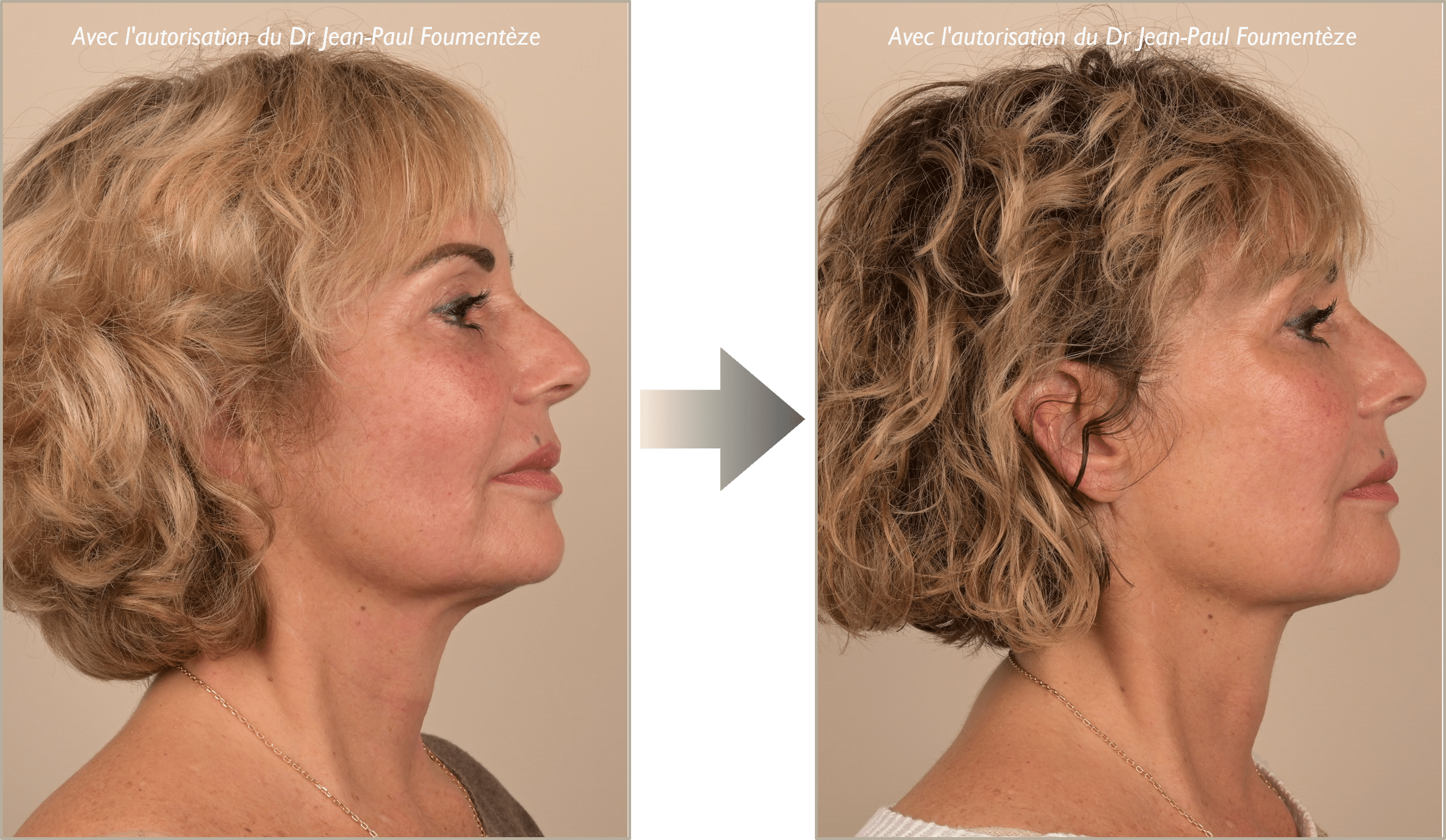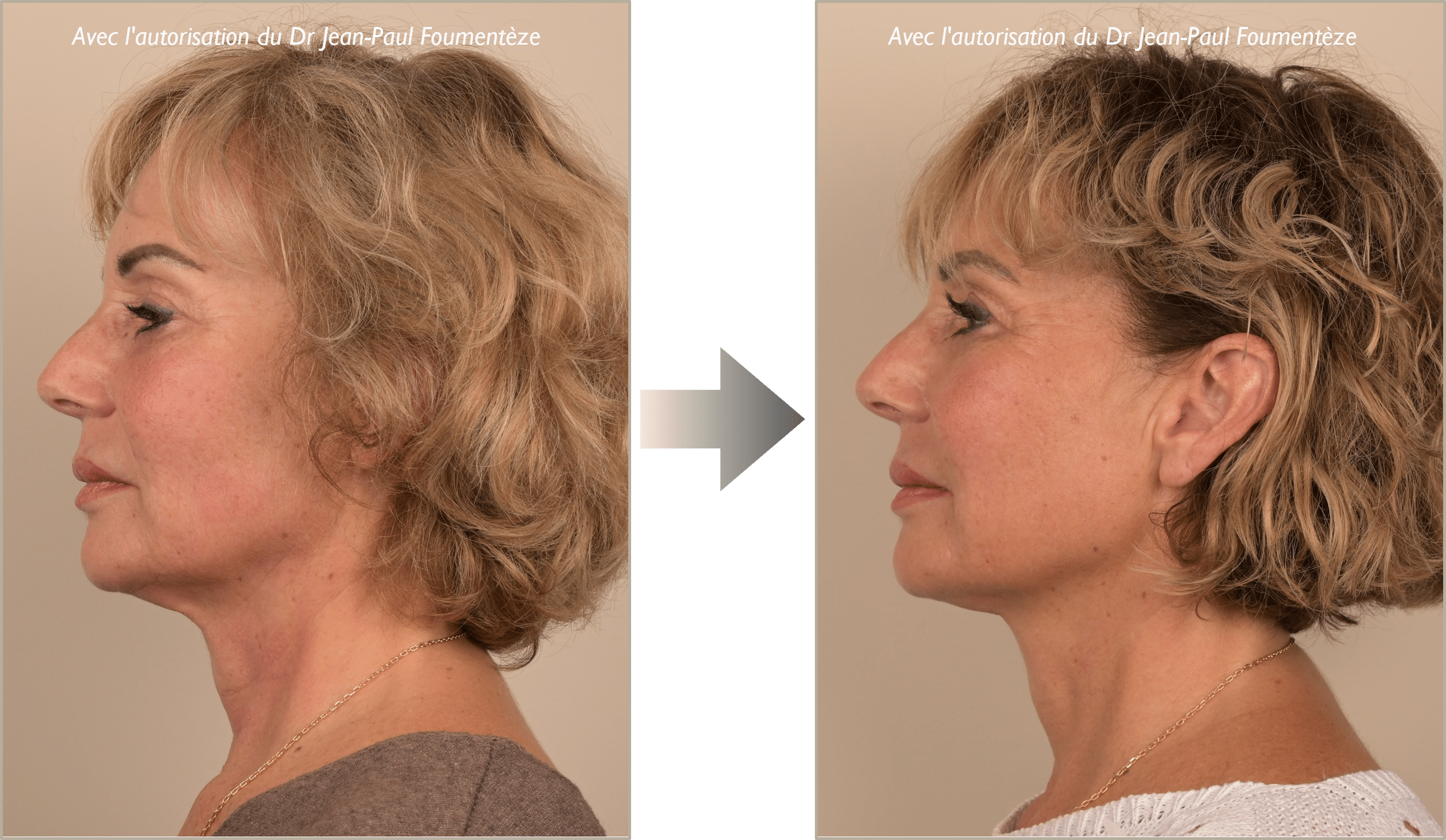Over the years, the large platysma neck muscle (which is attached to the skin) spontaneously contracts and even more so in two precise areas.
This contraction is the origin of the disappearance of the neck angle (cervicomental angle) and the appearance of two subcutaneous median bands in slim patients; these are commonly called platysmal bands or dewlaps.
To-day, there is a solution to remedy the appearance of platysmal bands by using permanent suspension threads.
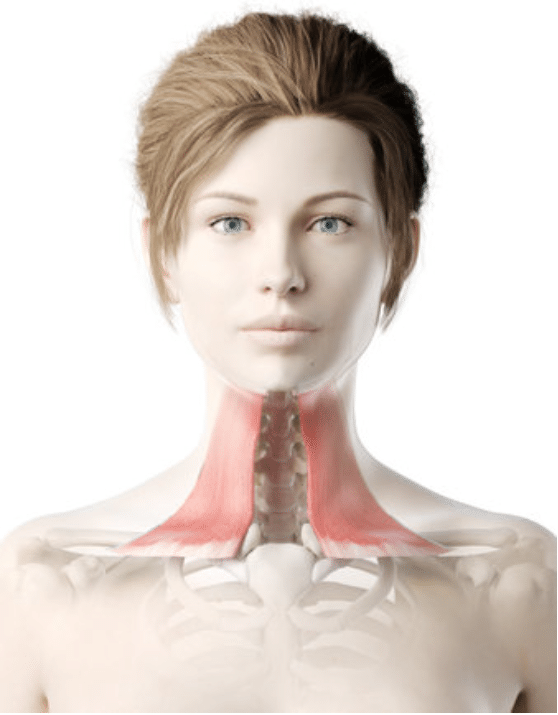
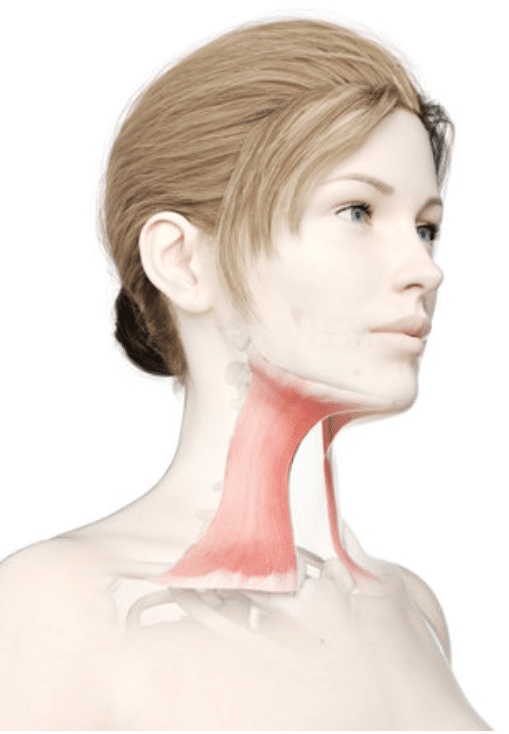
Diagrams of the platysma skin muscle
The treatment to restore the neck angle and eliminate platysmal bands has always been a real challenge for doctors. Up until now, there have been two techniques on hand, surgery and Botox. Both are effective for certain indications but unfortunately are largely insufficient in the majority of neck cases.
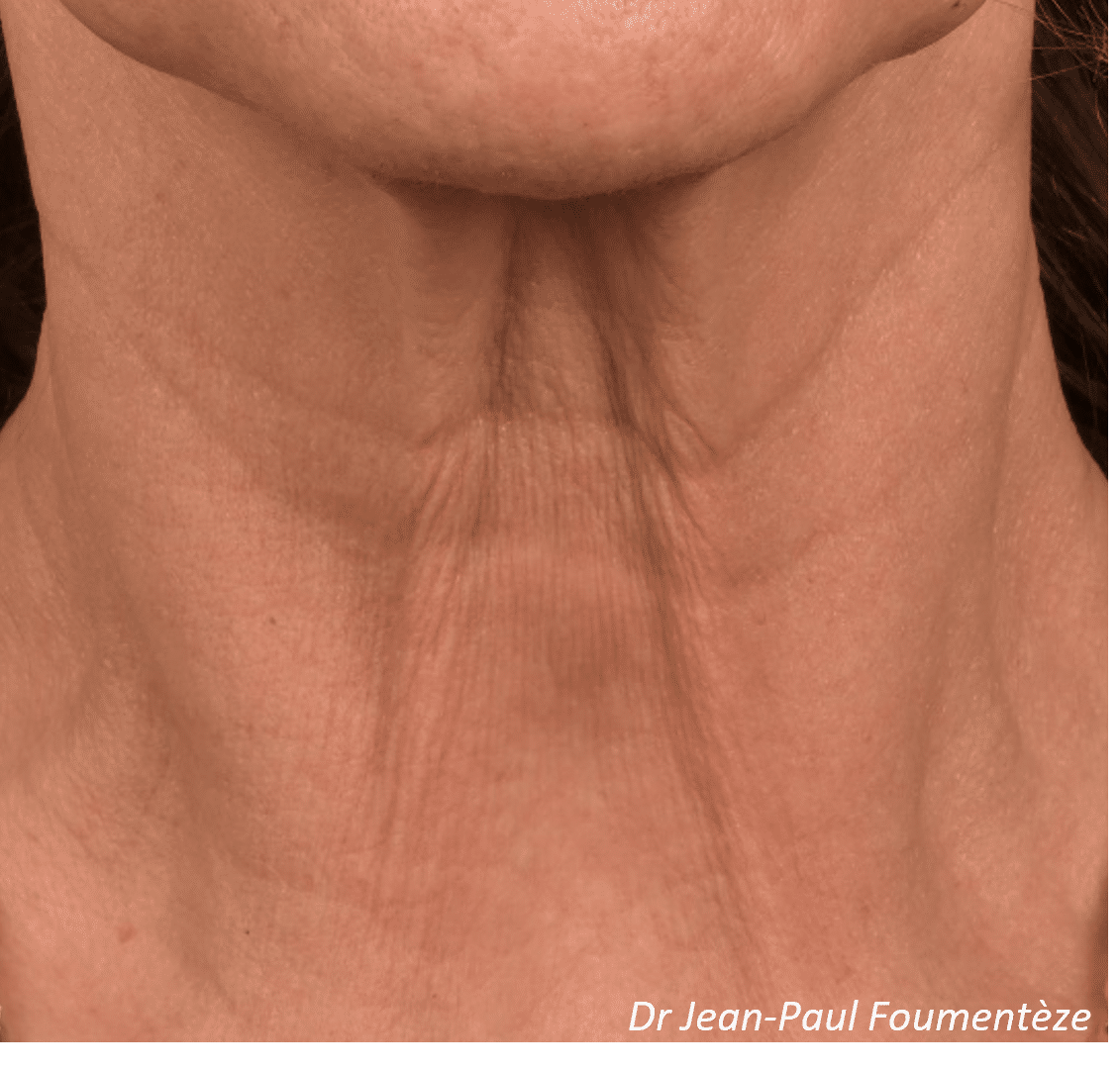
Photo of “platysmal cords” or ” dewlaps “.
Surgical treatments: the mechanical treatment.
For the last 40 years, all the great surgeons have tried to solve the problem but have been unable to avoid platysmal bands from frequently re-appearing between 1 and 3 years after surgery.
Surgery is based on two different principles to treat muscular contraction of the platysmal muscle:
- Interruption of the tension in the platysmal bands:
- By high, low or levelled surgical divisions of the muscle
- By surgical removal of a large portion of muscle.
- By relocation of the platysmal bands:
- By spacing them by lateral traction during a face lift; or
- On the contrary, by bringing the two bands together by ligation in the form of a brace.
Medical treatments: the biological treatment.
More recently, the remarkable effectiveness of botulinum toxin injections – Botox – in countering excessive contractions of the skin muscles of the forehead, both curative and preventive, has paved the way for its use on the neck muscle. While the result is genuine in the case of initial cords, despite being short-lived (around 3 months in the best of cases), this is unfortunately no longer the case when the cords are well established after the age of fifty.
All injection topographies were tested (spread over the entire height of the cords or distributed over the entire width of the muscle), as well as all variations in product concentration. Unfortunately, there is no magic formula, and the results are always disappointing.
Summary:
Let us analyse why these two historic treatments have their limits:
-
- Invasive but bold neck surgery, cuts or displaces the platysmal muscle without being able to return it to its original position for any length of time. The immediate result is wonderful, but the muscle continues to wrest against the treatment by contracting (that is what muscles do) and eventually it wins, thus greatly reducing the early result.
- Botox targets the reason – muscular hypercontraction -but has no mechanical way of flattening the platysmal bands and restoring the cervicomental angle.
Logically, to attempt to counter this double shortcoming, the classic treatment for necks to-day relies on combining the two techniques: surgery supported with botulinic toxin -Botox – 3 or 4 times a year.
The new approach with permanent suspension threads: a different therapeutic approach for neck treatment.
The principle:
The originality of permanent suspension threads is that they give the practitioner the opportunity of “returning” the platysmal muscle precisely to its original position and especially of the muscle remaining there over time. The perennial presence of the suspension thread guarantees the durability of the result. Of course, a resorbable thread is of no interest, since once it has begun to be absorbed within just a few months, it will no longer have any effect.
The technique:
The permanent suspension thread is positioned on either side in the platysmal muscle then locked with its opposite counterpart on each of the two platysmal cords to allow a gentle yet very precise tension to be applied.
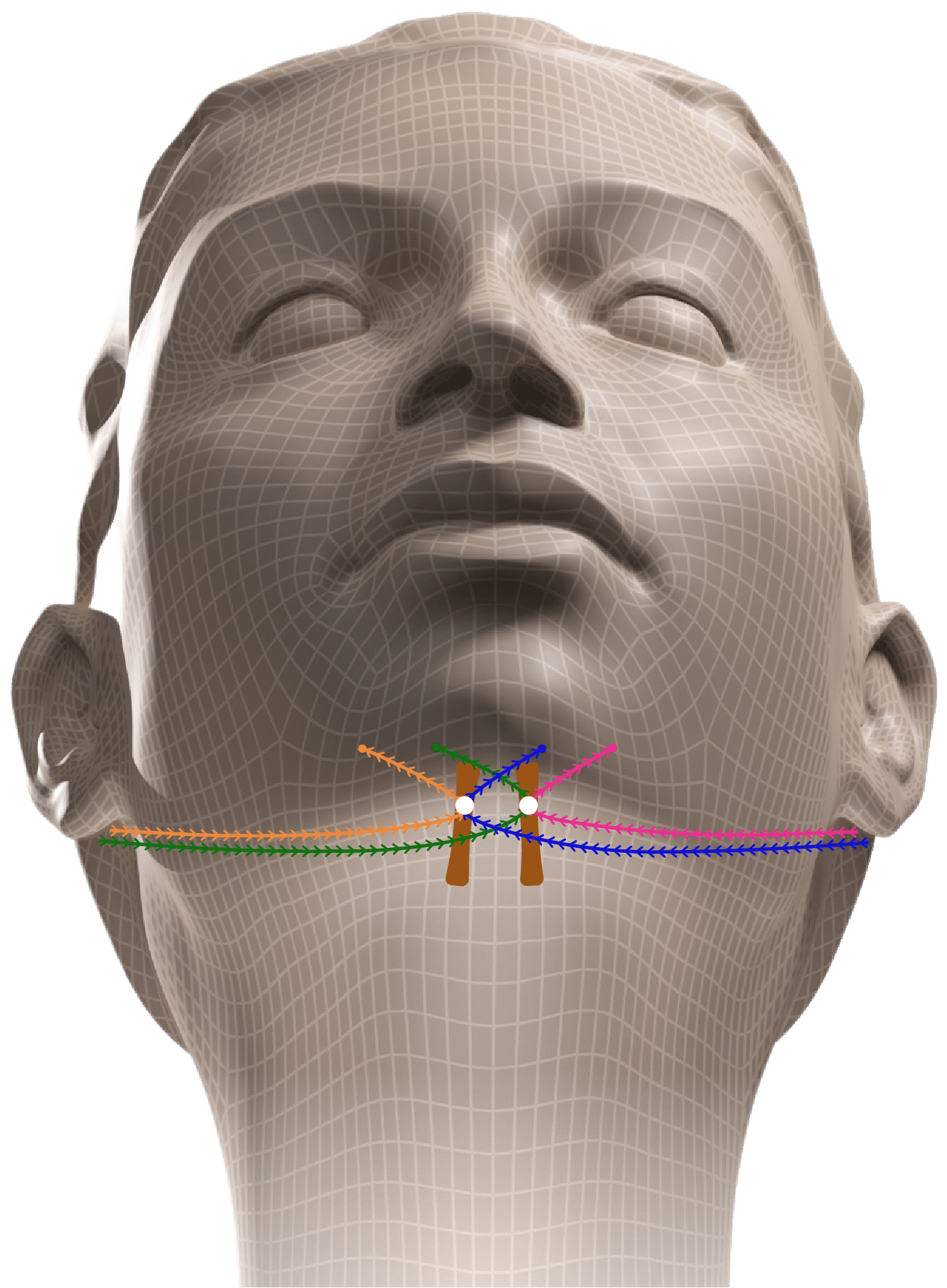
Diagram of the permanent suspension thread technique
The results:
Effectiveness is far greater than any other technique; there is no tissue distortion, and the thread remains invisible. Moreover, the patient feels no discomfort in the neck after only one week.
Result of thread lift with permanent suspension threads at the cervicomental angle & platysmal bands – Right profile.
Result of thread lift with permanent suspension threads at the cervicomental angle & platysmal bands – Left profile.
Result of thread lift with permanent suspension threads at the cervicomental angle & platysmal bands – Right profile.
Result of thread lift with permanent suspension threads at the cervicomental angle & platysmal bands – Frontal view.
Result of thread lift with permanent suspension threads at the cervicomental angle & platysmal bands – 3-4 view.
Also, the stability of these results totally avoids complementing treatment with Botox.
Conclusion:
The key success with suspension threads, be they used for the face or, as here, for the neck is that they are positioned in keeping with the patient’s anatomy and visible identity: nothing is cut, nothing is sacrificed, nothing is modified.
Quite simply, those tissues which have migrated over the years are returned to their rightful position! Any unnatural positioning will be quickly eliminated.
Result of positioning suspension threads at the cervicomental angle & platysmal bands – Frontal view.
This principle is the very essence of permanent suspension thread effectiveness and particularly the natural-looking results obtained.
If permanent suspension threads, either by themselves or in conjunction with surgery, are being used by more and more plastic surgeons it is because the scientific world recognises the technique as combining a natural look with effectiveness: a visible result but the procedure is not identifiable.
See you soon,
Doctor Jean-Paul Foumentèze – Aesthetic Doctor in Nice
#Suspensionthreads #Lifting #Platysma #Neck


